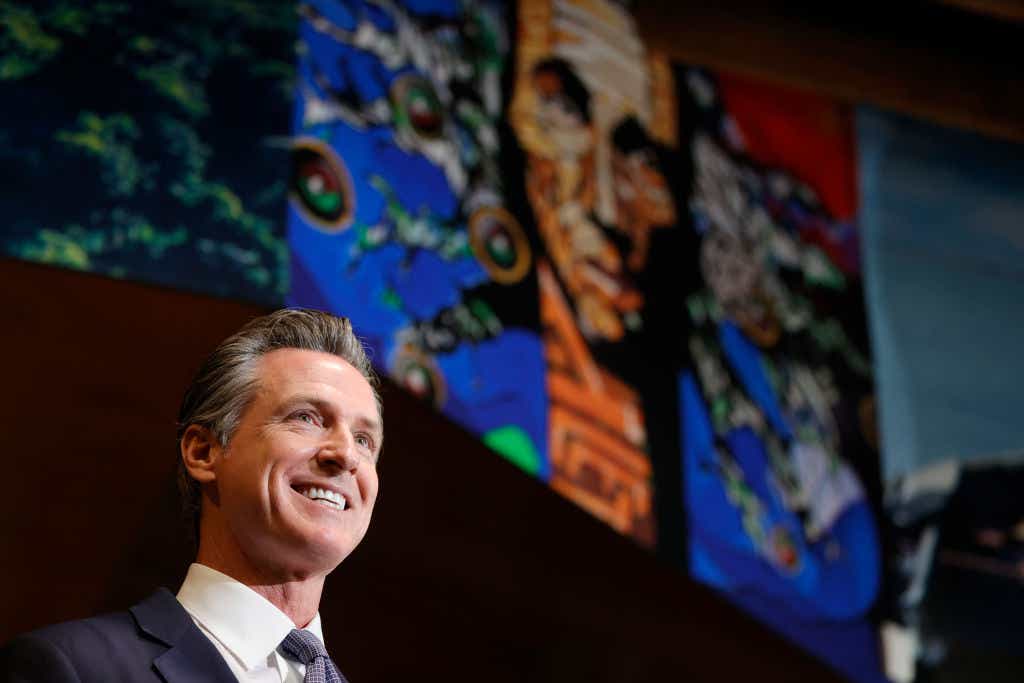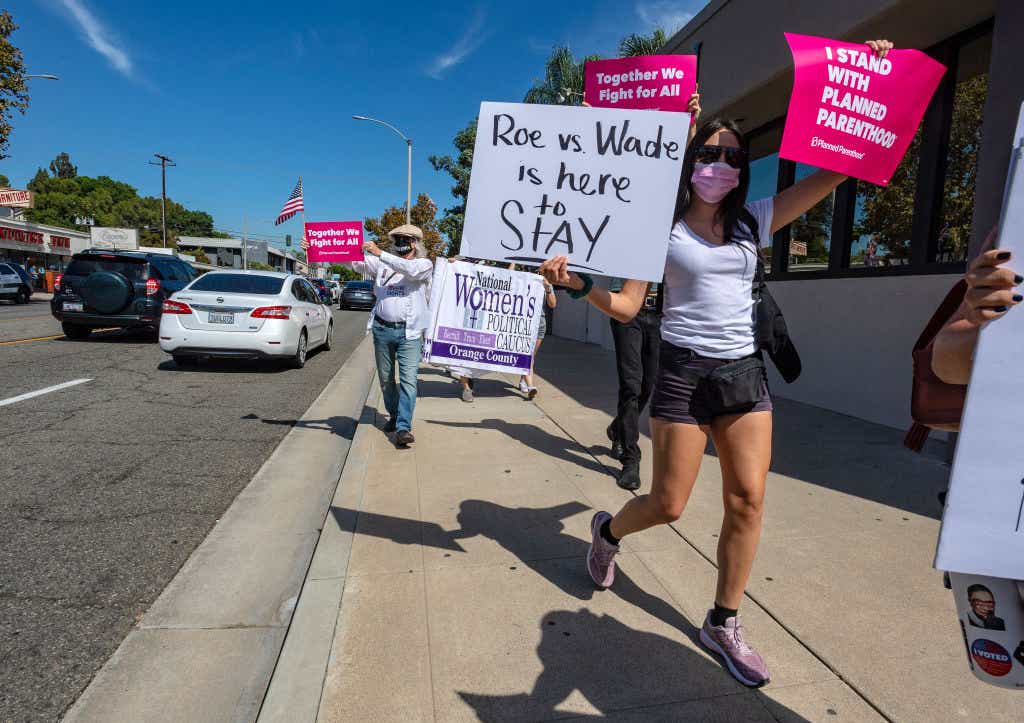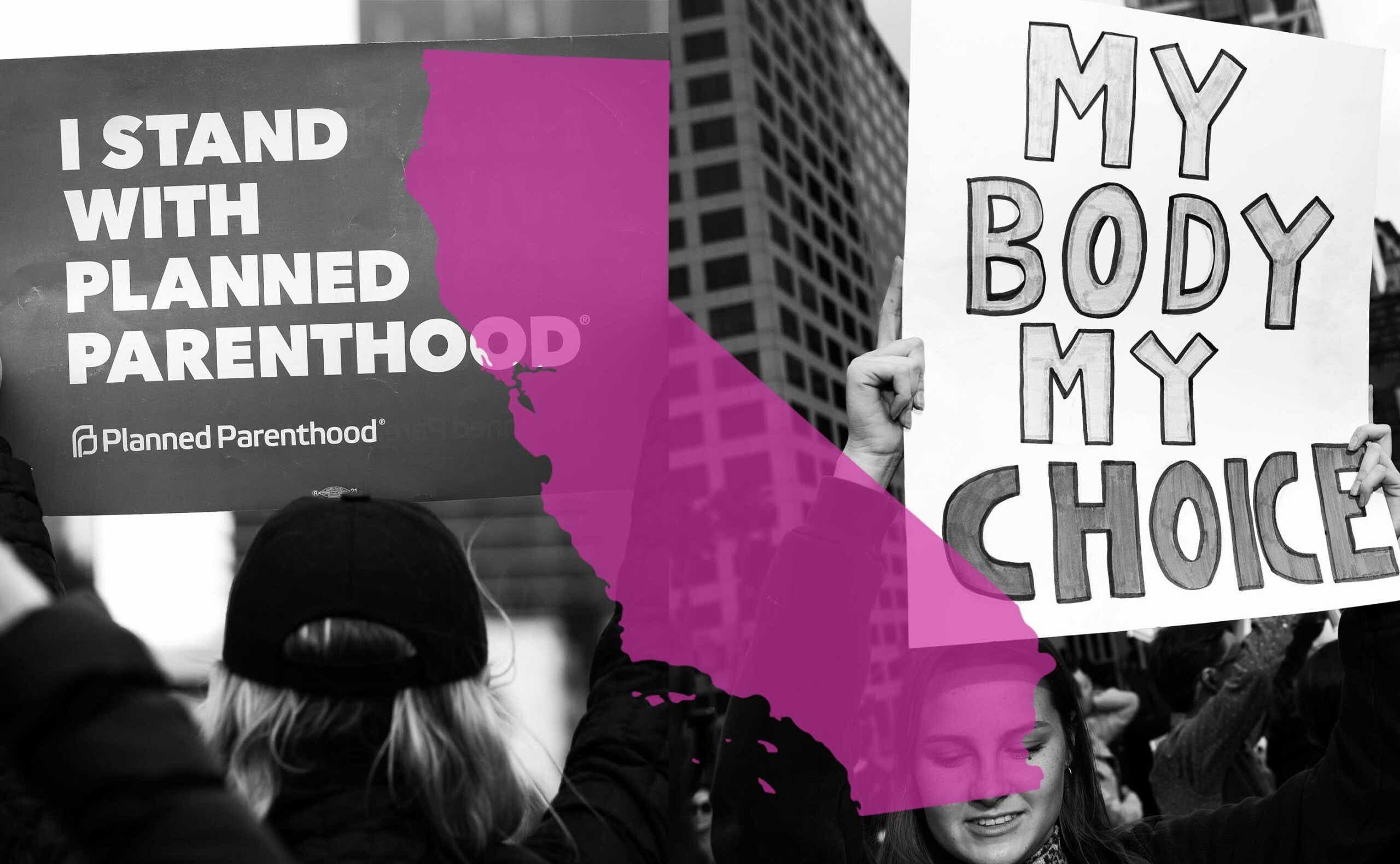One of the many questions going into 2022 is, what does the future of abortion rights hold? If it’s anything like last year, it could be pretty grim, according to some experts and activists.
Attorney Fabiola Carrion calls 2021 the “worst year” for abortion restrictions in nearly half a century. And some recent developments back that up: A new decision to overturn Roe v. Wade, which protects abortions nationwide, could come as soon as this summer, and more than 65 million women could lose access as a result. That’s why some state groups, policymakers, and lawmakers are wasting no time in taking action.
In December, California announced plans to become a “sanctuary state” if the justices decide to ultimately overturn or even dramatically curtail abortion access. To make this become a reality, Democratic Gov. Gavin Newsom started a group known as the California Future of Abortion Council (CA FAB), and it has released 45 recommendations for the state to consider if legal precedent is struck down.
Carrion, who also sits on the council and helped shape these guidelines, says a lot of the proposals — which range from education to legal protections — had already been presented and were already top of mind for committee members. CA FAB has also accounted for the expected surge of patients the state could face if Roe v. Wade is effectively overturned. In fact, the Guttmacher Institute, a pro-choice research organization, predicted California could see as much as a 3,000 percent spike in the number of out-of-state patients. To account for this surge, the committee has recommended paying for travel, lodging, and procedures for people from other states.
“It’s pretty remarkable that so many organizations had the same goals and were able to agree on 45 recommendations — I think it just speaks to how high the stakes are right now,” says Jodi Hicks, who is president and CEO of Planned Parenthood Affiliates of California, which is one of the 40 abortion providers that make up the council along with advocacy groups and lawmakers.

The ball’s now in Gov. Newsom’s court to work with the council, and further detail a budget proposal that he announced on Monday, which includes the council’s recommendations. “Unlike other states, California is EXPANDING ACCESS to abortion services,” Newsom tweeted. “Our new CA Blueprint expands flexibility for providers so more women can have more access to reproductive care.”
But this isn’t just some far-fetched fantasy: California has the funds and means to make these recommendations come to fruition. The state’s independent Legislative Analyst’s Office predicts that California will have a whopping $31 billion surplus this year. These funds likely won’t go untouched: In 2020 alone, Planned Parenthood, which comprises about half of California’s abortion clinics, said it served 7,000 people from other states. This includes states like Texas, where a restrictive new law known as Senate Bill 8, remains in effect and prohibits abortions after about six weeks.
Hicks says meeting this influx from Texas and other states proves that California will need to get creative in order to increase the workforce to meet this need, such as recruiting trained abortion practitioners from states that can no longer provide care to go into states that will need additional workforce. She worries that a surge in patients could result in delayed care, pointing to Oklahoma City as a prime example, where she says wait times for an appointment went from an average of three days to somewhere around three weeks.
“The biggest point is we need to ensure that we don’t see a delay in care and that we properly prepare and help patients navigate a new way to receive that care if they’re not able to get access to abortion in the state they’re in,” she tells us.
This effort also includes working in partnership with other states. “Many states are starting to have these conversations and starting to prepare and I don’t think any of it will be in a bubble,” Hicks tells us. “We’ll be reaching out and talking with our colleagues, but at the state level, we’ll certainly be talking with other states as well.” After all, California isn’t the only state making moves in response to the uncertainties surrounding Roe. v. Wade: New York Attorney General Letitia James has similarly called for a “safe haven,” and the need to create a fund that would offer assistance to those all across the country seeking abortions.
“Mississippi and other conservative-led states have declared an all-out war on women and their bodies, but New York cannot sit idly by as, one-by-one, these states try to take us backward in time,” James said in a statement.

But there’s no doubt that California has led the way in protecting abortion rights. The state already pays for the procedure for many low-income residents through its Medicaid program, and it’s among just six states that requires private insurance companies to cover abortions, even though many patients still end up paying deductibles and co-payments.
Carrion believes the lack of abortion access is fundamentally an economic injustice, and she sees the legal challenges to restrict access as “an opportunity to really think about that, and how this deeply impacts low-income people.”
“This deeply impacts women of color, people capable of getting pregnant who are people of color, LGBTQ people, young people, and mothers, so maybe we can do something better than what we had before,” she tells us. It’s true, surveys from The Guttmacher Institute show that poor and low-income women have become a growing share of abortion patients in recent decades. For instance, almost half of women who had an abortion in 2014 were below the poverty line, while about a quarter was very close to poverty. These patients may also not be from the demographics you might assume: Six in 10 women who have abortions are already mothers, according to a 2019 report from the Centers for Disease Control and Prevention.
Still, there are some abortion advocates in the state that hope this potential surge of abortion patients will give them the opportunity to convince more women not to get the procedure. “Even if we are not facing any immediate legislative opportunities or legislative victories, it’s a reminder that the work of changing hearts and minds and also providing real support and resources to women facing unplanned pregnancies — that work will always continue,” says John Keller, who is president and CEO of the conservative California Family Council.
Despite some opposition and challenges, California advocates remain optimistic about their ability to protect abortion care for not only their residents but potentially those in other states that have nowhere to turn. “The bottom line is just because extremist politicians in certain states ban access to an essential service doesn’t mean that patients don’t continue to need that essential service, especially abortion,” says Hicks.









